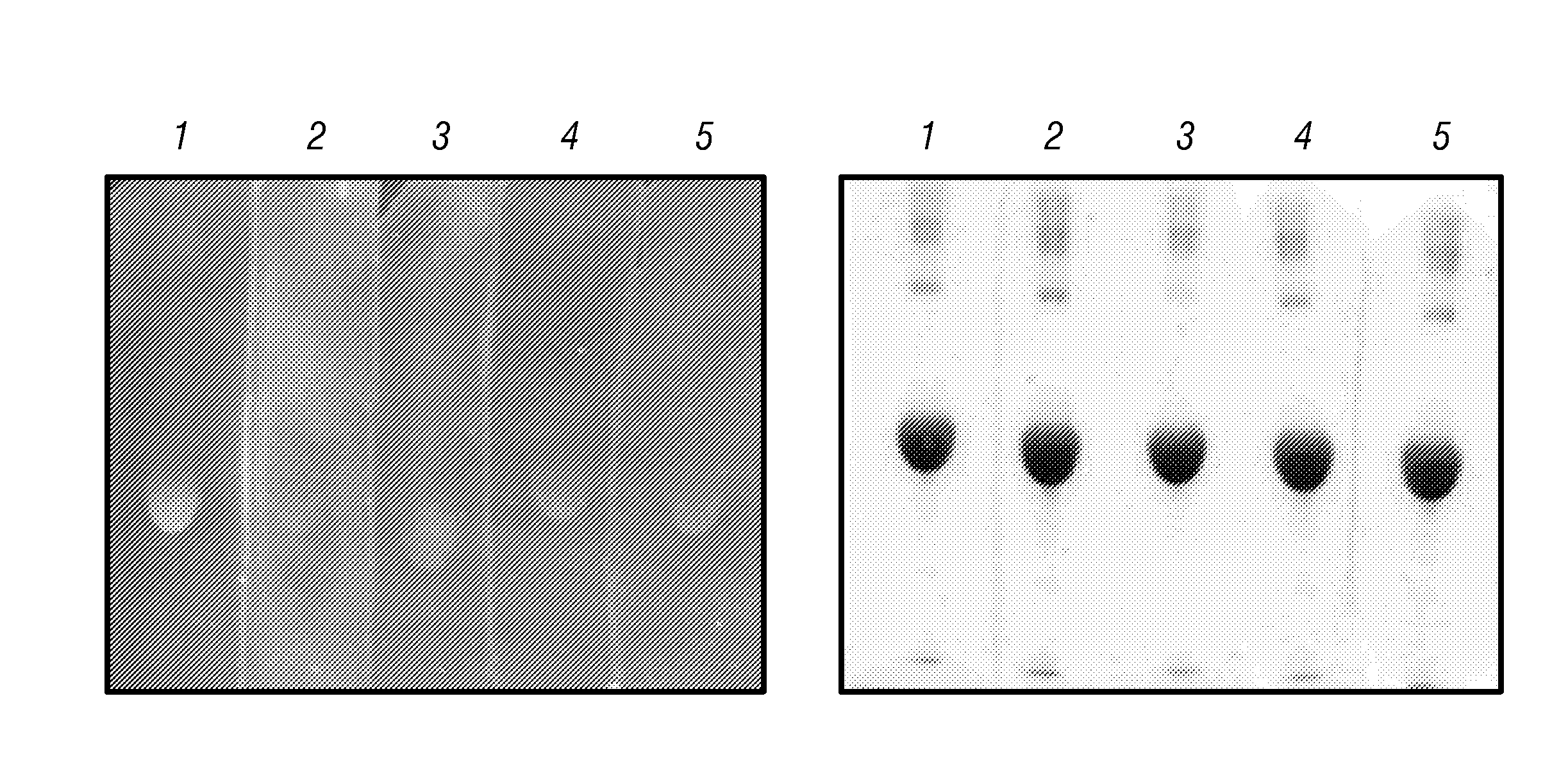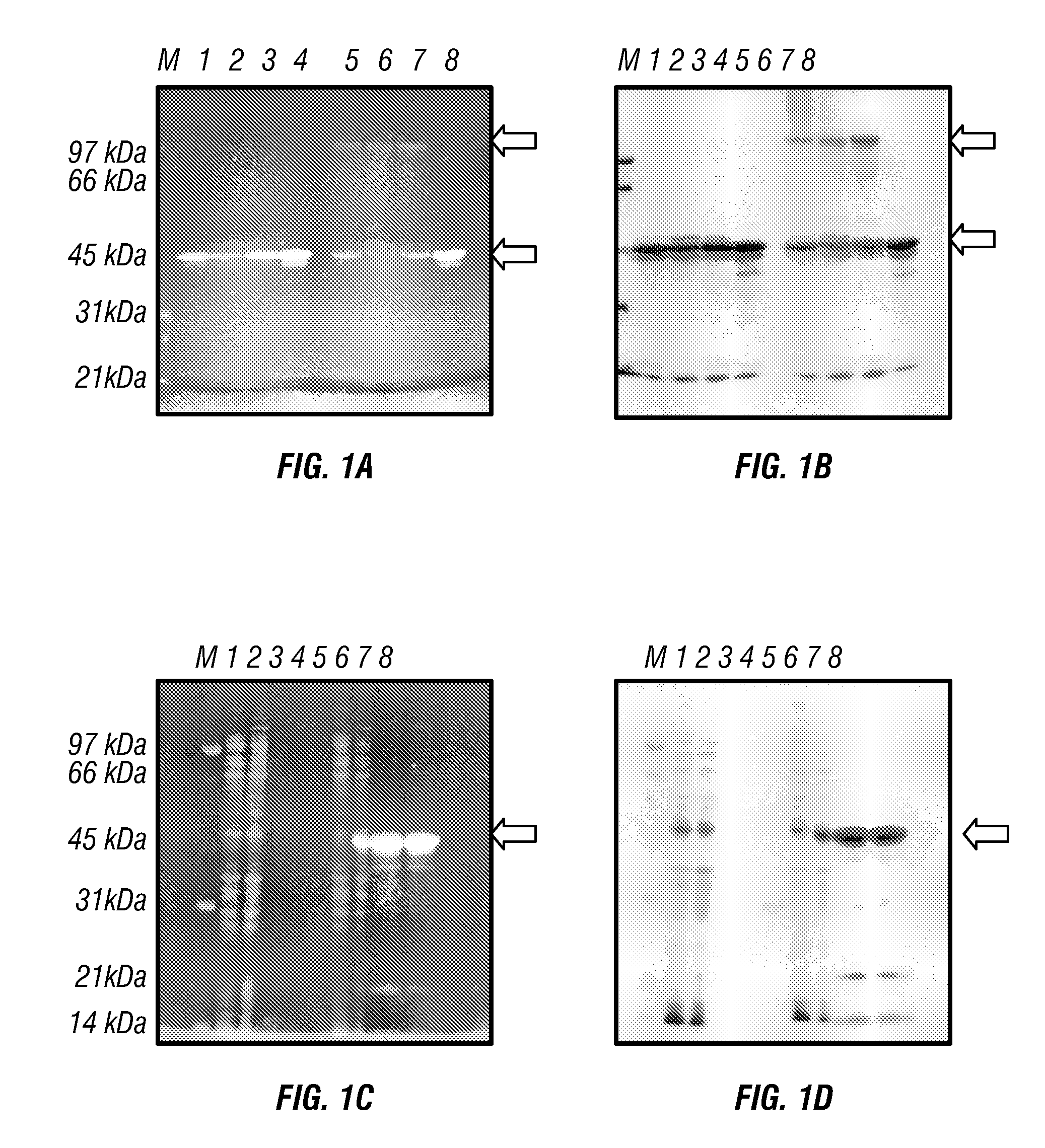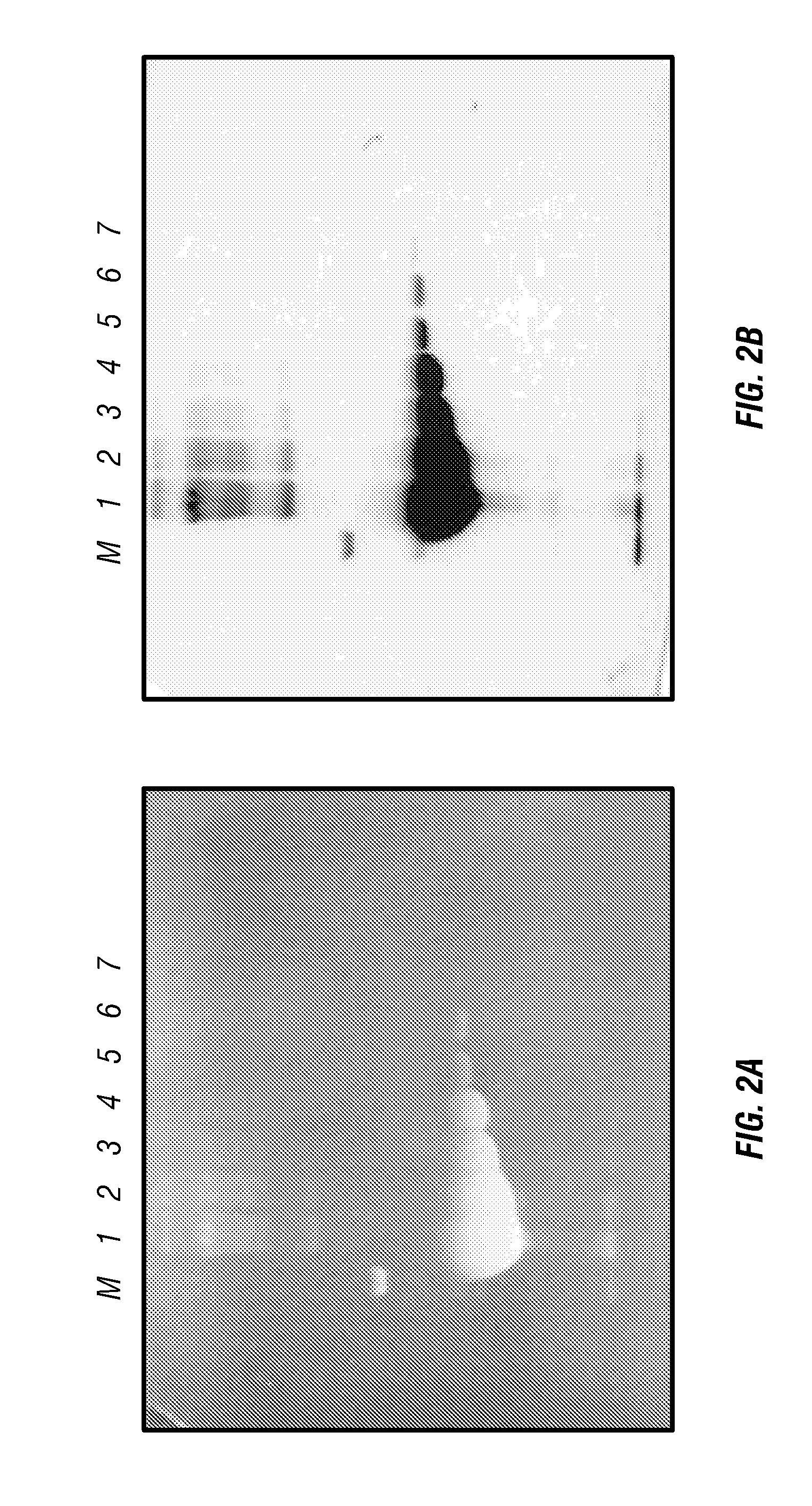Fluorescent detection of proteins in polyacrylamide gels
a polyacrylamide gel and protein technology, applied in the direction of fluid pressure measurement, liquid/fluent solid measurement, peptide measurement, etc., can solve the problem of irradiation-induced production of long wavelength emitting substances, and achieve the effect of not having to laborious labeling or staining steps
- Summary
- Abstract
- Description
- Claims
- Application Information
AI Technical Summary
Benefits of technology
Problems solved by technology
Method used
Image
Examples
example 1
Post-Electrophoresis Incorporation—Materials and Methods
[0042]Electrophoresis was performed in each case using an electrophoresis apparatus from Owl Scientific (Portsmouth, N.H.) with 15 3 20 3 0.15-cm gel cassettes or a Mini Protean II™ system from Bio-Rad (La Jolla, Calif.). Upon completion of electrophoresis, the gel was removed from the cassette and placed in the haloalkane solution. After soaking from 5 to 10 minutes, the haloalkane solution was decanted, and the gel was rinsed several times with tap water to remove residual solution and then placed in water to prevent drying. If trichloroacetic acid (TCA) is used, it is important to rinse the gel to remove excess TCA prior to protein visualization since TCA is corrosive and will damage the UV transilluminator. To visualize proteins, the gel was subjected to UV illumination using a standard UV box. During the course of UV irradiation, resolved proteins became visible as bluish-green bands against the background of pale blue gel...
example 2
Comparison of Fluorescent Detection with CBB Staining
[0044]FIG. 1 shows results which validate the utility of this method. In FIGS. 1A and 1B, approximately 20 μg of a recombinant protein and three of its mutants, all with electrophoretic mobility corresponding to 46 kDa, were loaded on the gel in sample buffer either with or without added β-mercaptoethanol (BME). FIG. 1A is a picture of the gel soaked in 10% TCA for 5 minutes and rinsed three times with tap water. FIG. 1B is the same gel after conventional CBB staining. It is evident that wild-type (wt), as well as mutants 1 and 2, form aggregates of a higher molecular weight in the absence of BME, while mutant 3 does not. These proteins could be visualized by UV illumination 10 min after the completion of the PAGE run. In FIGS. 1C (TCA) and 1D (CBB), an expression of a recombinant protein by two bacterial clones and its purification were followed. The purifications were run in duplicate. The gel demonstrates that clone 1 does not ...
example 4
Pre-Electrophoretic Incorporation: Optimization and Sensitivity
[0058]In optimization studies 0.02, 0.05, 0.1, 0.2, 0.5, 1.0 and 2.0% TCE (vol / vol) were added to the gel before polymerization. For the TCE staining the 12% SDS-PAGE was run and then soaked in 10% TCE (v / v) in water:methanol (1:1) for ten minutes. Then the gel was washed in water and visualized as described above.
[0059]Calculating the intensities for FIGS. 2 and 3A, the sum of the intensity of phosphorylase b, albumin, ovalbumin and trypsin bands was used. These were chosen because they contain percentages of tryptophan near the average for soluble proteins. Four sets of 0.25 μg and 0.5 μg bands were used to calculate intensity per μg.
[0060]FIG. 8 shows that maximum intensity is reached with a TCE concentration of 0.5% and that lower concentrations have a lower intensity while higher concentrations do not have higher intensities.
[0061]FIG. 3A shows that intensity increases nearly linearly with the amount of protein up t...
PUM
| Property | Measurement | Unit |
|---|---|---|
| wavelength | aaaaa | aaaaa |
| temperature | aaaaa | aaaaa |
| wavelength | aaaaa | aaaaa |
Abstract
Description
Claims
Application Information
 Login to View More
Login to View More - R&D
- Intellectual Property
- Life Sciences
- Materials
- Tech Scout
- Unparalleled Data Quality
- Higher Quality Content
- 60% Fewer Hallucinations
Browse by: Latest US Patents, China's latest patents, Technical Efficacy Thesaurus, Application Domain, Technology Topic, Popular Technical Reports.
© 2025 PatSnap. All rights reserved.Legal|Privacy policy|Modern Slavery Act Transparency Statement|Sitemap|About US| Contact US: help@patsnap.com



